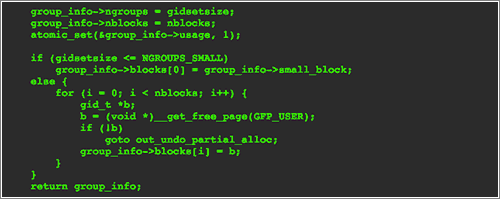
Total Pageviews
Saturday 7 December 2013
Alt-Week 12.7.13: Wormhole short-cuts, watery planets and history as seen by Google Books

Google Glass Prescription Eyewear Photos Leak Online

Un camarote de la Estación Espacial Internacional: 90×90×195 centímetros
In my crew quarters on station. 3'x3'x6.3' I barely fit but it is home. I have my sleeping bag and computer and pics pic.twitter.com/pOeBHPF1nG
— Rick Mastracchio (@AstroRM) diciembre 2, 2013 Según cuenta Rich Mastracchio apenas cabe en su camarote de la Estación Espacial Internacional, donde tiene su saco de dormir, su ordenador, y sus fotos, y es a lo que llama casa durante su estancia en la Estación Espacial Internacional.
- De visita en un camarote de la Estación Espacial Internacional, con un poco más de detalle.
- De acampada en la Estación Espacial Internacional, o cómo donde caben seis caben nueve, cuando no hay camarotes para todos.
via Microsiervos http://www.microsiervos.com/archivo/ciencia/camarote-estacion-espacial-internacional-90-x-90-x-195-centimetros.html
Google: We're Winning Against Phishing and Spam Emails

El Eternauta 2
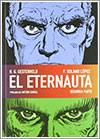
![]() El Eternauta 2 . Guión de Héctor Germán Oesterheld. Dibujos de Francisco Solano López. ISBN 8467906359. 216 páginas, blanco y negro.
El Eternauta 2 . Guión de Héctor Germán Oesterheld. Dibujos de Francisco Solano López. ISBN 8467906359. 216 páginas, blanco y negro.
Justo al terminar lo relatado en El Eternauta Germán Oesterheld se va a casa de Juan Salvo para contarle todo lo que acaba de averiguar. Se encuentra allí a Juan, su esposa Elena, su hija Martita, y sus amigos Favalli, Lucas y Polsky, con quienes iba a echar una partida de Truco.
Lógicamente todos alucinan con la historia que viene contando, y en un momento dado hasta él mismo parece olvidarlo todo tras sufrir un vahído, así que con ánimo de tranquilizarlo acaban por invitarle a quedarse a tomar un café con un poco de bizcocho con ellos y a unirse a la partida.

La mente de Oesterheld es un caos
Justo cuando están a punto de acabarla Oesterheld se incorpora diciendo que de nuevo lo recuerda todo y menciona la nevada, a lo que Juan le contesta que él también lo recuerda todo y que no hay ninguna nevada sino que es mucho peor.
Cuando se dan cuenta la casa se encuentra en medio de un páramo y el resto de la ciudad ha desparecido, igual que Favalli, Lucas y Polsky.
De alguna forma la casa se ha trasladado siglo y medio al futuro, y sus ocupantes habrán de buscar como sobrevivir en un mundo aún dominado por los Ellos, en el que apenas sobreviven unos cuantos humanos de los que Juan se convertirá en líder.
Claro que Juan en todo este proceso ha cambiado y ya no es el mismo Juan de la primera parte de El Eternauta y hará cosas que serían antes impensables con tal de conseguir sus objetivos.
Igual que la primera parte, esta segunda parte del Eternauta es mucho más que una historia de ciencia ficción, y hay un montón de críticas y referencias nada veladas a la situación política mundial. mucho más fuertes que en la primera parte. De hecho Oesterheld terminó por ser uno de los desaparecidos durante la dictadura argentina.
Esta segunda parte de El Eternauta no me pareció tan original como la primera, y la historia es bastante más previsible, además de que el guión también tiene algunos agujeros considerables, pero en cualquier caso también me parece de lectura recomendable.
Me queda ahora hacerme con la tercera parte, aunque en esta obviamente Oesterheld ya no participó y Solano apenas lo hizo dibujando la cara de un par de personajes.
via Microsiervos http://www.microsiervos.com/archivo/comics/el-eternauta-2.html
Samsung Galaxy J coming to Taiwan on December 9th, according to YouTube teaser

Todos los GIF animados de la Wikipedia reunidos en una web
Hay cosas que despiertan pasiones pero que algunos no podemos aspirar a comprender: los vídeos de las youtubers famosas, las señoras que cuidan a más de cinco gatos en su casa o los GIF animados que pueblan innumerables webs. Los amantes de estos últimos disfrutarán con WikiGIFs , que recoge todas las pequeñas animaciones de este tipo que aparecen en la Wikipedia.
Dentro de la fauna digital que hay por ahí puede considerarse de lo mejorcito, porque suelen ser imágenes educativas, ilustrativas y diseñadas con cierto buen gusto a la vez. Ve pulsando la tecla Espacio para verlos todos hasta que te aburras.
(Vía MetaFilter.)
via Microsiervos http://www.microsiervos.com/archivo/internet/gif-animados-wikipedia.html
Google's Nexus TV Could Launch in Early 2014, Report Says

Recommended Reading: Cool Tools review, drone delivery and more

Ask A Dev: Why Did Apple Decide to Offer a Budget iPhone?

You Will Never Own This 24-Karat Gold HTC One

The 7 Best Headphones for Gamers

Motorola's modular phone prototype is almost ready, final product might be sold on Moto Maker

20 Incredible 3D-Printed Gifts

STI Buys Chalkable For $10M To Bring Its Educational App Store And Learning Platform To K-12 Schools
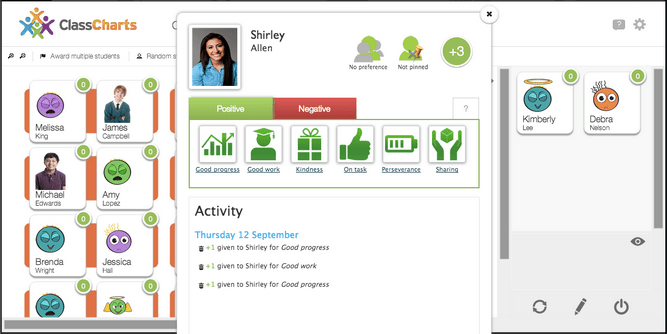
With entrepreneurs beginning to wake up to the huge demand for better learning tools, and the opportunity for technology to remove some of the long-standing barriers within the system, startups have begun to flood into the education market. As a result, venture investment has begun to flow into education, and with a new crop of entrepreneurial and engineering talent emerging, established players are turning into buyers.
In October, Amazon stepped into education for the first time with its acquisition of math instruction company, TenMarks, and a new month brings another first-time buyer and another EdTech acquisition, as STI scooped up education-focused app store, Chalkboard.
STI is the 30-year-old maker of education data management solutions for K-12 schools, which focuses its suite of products on Student Information Systems, parent-teacher communications and reporting, among others. With its acquisition of Chalkable, STI is yet another example of an veteran education player looking to keep pace with the demand for more accessible and user-friendly learning tools by injecting new talent and technology into its ranks.
As a result of the deal, all nine members of the Chalkable team will be joining STI, and Michael Levy and Zoli Honig, the startup’s CEO and COO, respectively, will stay on as directors of STI’s new Chalkable team. Unlike some startup acquisitions, Chalkable’s product will remain active and, according to a source with knowledge of the deal, will be combined with technology from other acquisitions pipeline and STI’s SIS product, iNow, to give the company a revamped, modern product.
As part of STI’s move to become a more modern (and visible) EdTech company, it hired a new CEO and COO, both with decades of experience at K-12 education and technology companies to help lead the charge. This also means that STI appears ready to put some capital to work to inject new talent, as we hear from sources that the company paid around $10 million to acquire Chalkable.
The 500 Startups grad launched in September of last year with a platform that aimed to serve schools both as an app store and as a learning management system, serving 50+ institutions before it was acquired. The startup launched with $1.3 million in funding from 500 Startups, Expansion Venture Capital, Great Oaks VC, former Facebook Chief Privacy Officer Chris Kelley and former Facebook mobile platform lead, Luke Shepard, among others.
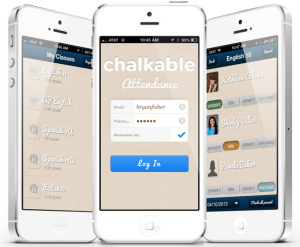 Chalkable aimed to solve a nagging question among schools, parents and students: “Where do I go to find web-based learning tools on the web?” The amount of apps, content and digital learning tools on the Web and mobile devices is growing fast and is fragmented across an array of different sources. Chalkable set out on a mission to offer an aggregated resource for teachers and parents to find these tools, which, until the recent entry of Google (with Google Play for Education) didn’t exist for online education content.
Chalkable aimed to solve a nagging question among schools, parents and students: “Where do I go to find web-based learning tools on the web?” The amount of apps, content and digital learning tools on the Web and mobile devices is growing fast and is fragmented across an array of different sources. Chalkable set out on a mission to offer an aggregated resource for teachers and parents to find these tools, which, until the recent entry of Google (with Google Play for Education) didn’t exist for online education content.
The app store listed top education apps from a litany of resources across the Web, making it easy to search and discover quality content and click to buy. Backed by its basic learning management system, it allowed teachers to pull in student data and accounts from platforms and services like Khan Academy, Dropbox and Google, putting apps downloaded through the store and class data in once place.
While the idea has a lot of appeal, the road can be tough for startups operating in the K-12 market, because so much of school spending has traditionally been controlled by administrators at the district or state levels. The sales process can be long and is often mired in bureaucracy, and growth was measured for Chalkable (as it is for most) for this very reason.
Naturally, with a model like Chalkable’s, the more teachers have control in the decision-making process where the budget is concerned, the more freedom they have to choose and purchase apps — and the more revenue Chalkable sees as a result. Chalkable partnered with STI at first, but given STI’s much larger footprint as its services are now used by 5,000 schools across the U.S. and serve over 1.5 million parents.
With STI’s state contract in Alabama, Chalkable now has the opportunity to sell into every school in the state and, for a startup with a useful service that may be growing a bit of moss, that’s an opportunity that’s an opportunity that’s too good to pass up.
And for STI, Chalkable now allows their institutional customers to bring more modern, consumer-friendly and techy tools — the kinds that students use every day outside the classroom — into the learning process. In turn, it allows teachers, together with students, to create personalized “play lists” of learning content and personalized app experiences tailored to each member of a class.
“STI is continuously searching for ways to bring state-of-the-art education tools to our students, teachers and parents,” new STI CEO Derek Dunaway said in the company’s announcement. “The tools available through the Chalkable platform will increase the access our students have to highly relevant educational content and allow teachers to personalize instruction through customized apps that are recommended for each student’s level of learning.”
via TechCrunch » Startups http://feedproxy.google.com/~r/techcrunch/startups/~3/JlEArLc_DAs/
T-Mobile boosts LTE network speeds in Dallas using MetroPCS spectrum

Cómo parecer atareado al estilo hacker programador
Las cosas, aunque sean simuladas, hay que hacerlas bien. En vez de simplemente hacer el ridículo simulando programar (Asdsahhre kmasdiomjnn, grrfff, worrhrfff) como recomienda el Ministerio de Educación y Cultura, puedes «escribir» «verdadero» código con HackerTyper . Tac, tac, tac… Ideal para el postureo en clase, la biblioteca o cualquier cafetería.
(Vía Hacker News.)
via Microsiervos http://www.microsiervos.com/archivo/humor/estilo-hacker-programador.html
Google Play Music All Access gets Handy in Germany

Play-i Raises $1.4M From The Crowd For Toy Robots That Make Programming Kid-Friendly, Will Hit Stores Near You Next Summer
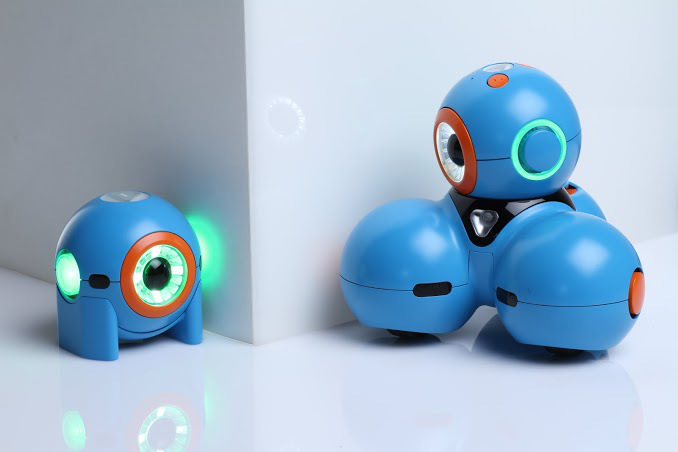
If we’re going to prepare future generations for an increasingly technical world (and workforce) ahead, then we need to teach them computer science and engineering. To some, that may sound like a no-brainer, but to the American educational system, where nine out of ten schools don’t offer programming courses, it not. Of course, to really get students engaged and inspire that lifelong love of computer science and technology — just as it is with learning a new language — education has to start early. And it has to be fun.
Learning how to code takes time and is a difficult proposition for adults, so asking kids to sit down and write a line of code (let alone learn the laws of computer science) almost seems absurd. It’s this problem that led Vikas Gupta, the former head of consumer payments at Google, to create Play-i and a couple of kid-friendly, educational robots.
Joined by co-founders Saurabh Gupta, who previously led the iPod software team at Apple, and Mikal Greaves, who led product design and manufacturing for electronics and toys at Frog Design, to make programming and engineering concepts accessible to kids, who’d rather be outside digging in the dirt. The team knew that whatever solution they designed would need to be something kids would want to play with, so they created Bo and Yana, two programmable, interactive robots that look and act a lot like toys.
The team raised $1 million from Google Ventures, Madrona Venture Group and others last year to build the prototypes, and today, though it’s still tinkering with details, the learning system is nearly ready for lift-off. When it comes to market next year, kids will be able to play with Bo and Yana right out of the box, controlling them through Play-i’s companion app designed for the iPad.
The app presents visual sequences of actions and simple commands on the iPad that kids can then perform — like clapping, waving their hand or shaking one of the robots — that compel the robots to perform certain actions. Young programmers can get three-wheeled Bo to scoot around the room, blink his light or play a xylophone, shake Yana to roar like a lion, or have them interact with each other. Through actionable storytelling, play and music, younguns start to learn the most basic concepts behind programming, like causation.
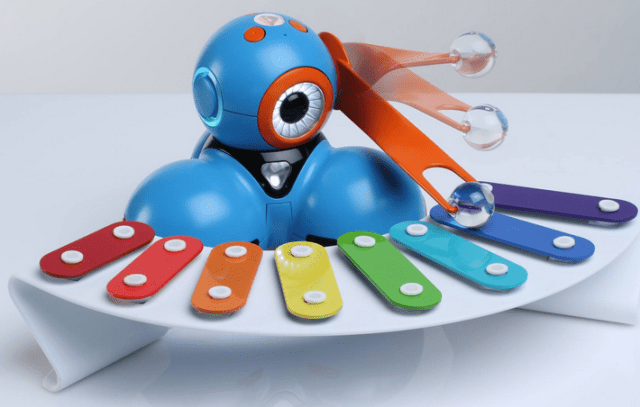
The coolest idea behind the interactive learning system is that, as kids get older, they will start to find that the commands are recorded on the app in a variety of programming languages, like Java and Python, so that concepts become more challenging as they progress. The idea is for Bo and Yana to be accessible to all ages, the level of learning is as simple or challenging as you want it to be.
While the gamifying of coding and teaching programming through toys isn’t new and, as Eliza pointed out, Play-i is entering a market already inhabited by products and startups like Cargo-Bot, Move the Turtle and Bee-Bot, this kind of computer science education is still relatively new. The demand and the market for it is also just beginning to develop, and as education reform pushes STEM education into more schools and, in turn, schools begin to look for novel ways to teach these concepts at younger and younger ages, the opportunity will continue to grow.
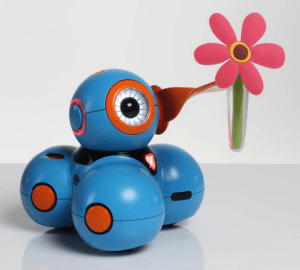 Although the co-founders think they’re onto something with Bo and Yana, they wanted to test the level of interest and demand among consumers. So they launched a crowdfunding campaign on the Play-i website in mid-November, and have since been pleased to find that not only was there interest, but that interest wasn’t just limited to the U.S.
Although the co-founders think they’re onto something with Bo and Yana, they wanted to test the level of interest and demand among consumers. So they launched a crowdfunding campaign on the Play-i website in mid-November, and have since been pleased to find that not only was there interest, but that interest wasn’t just limited to the U.S.
Over the course of its 31-day crowdfunding campaign, Play-i raised $1.4 million, five-times its goal, and $26K of that total were contributions towards robots that the company will give to schools and organizations that work with underprivileged children. The campaign saw contributions from the U.K., Canada, Germany, Australia, India and France, among others, with over 30 percent of contributions coming from outside the U.S.
With over 10,000 pre-orders and plans to ship next summer, the team will spend the next six months finalizing manufacturing and distribution partnerships. Gupta tells us that they plan to sell the robots through their website and through both online and brick-and-mortar retailers, though he says those deals are still in the works.
For more, stay tuned, find Play-i at home here and Eliza’s interview with the Play-i founder below:
via TechCrunch » Startups http://feedproxy.google.com/~r/techcrunch/startups/~3/gSJLaLIapLk/
ASUS Padfone Mini 4.3 pictured ahead of its launch next week

Bungie's Destiny ships worldwide on September 9th, 2014

T-Mobile to launch data-free $35 Unlimited Talk and Text plan on December 8th


